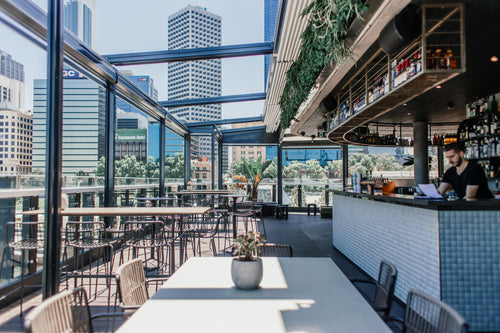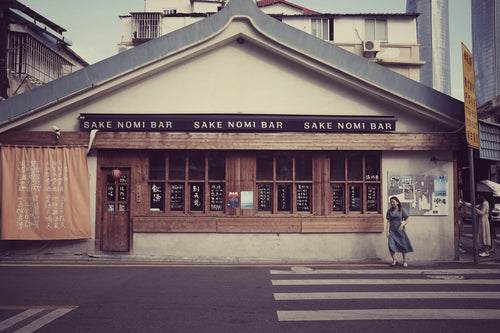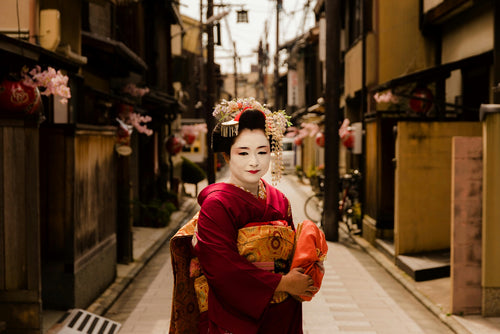
Power Spot Tours: Japan’s Famous Temples and Shrines
Japan is a land steeped in spiritual history, and visiting its temples and shrines provides not only a glimpse into its past but also a chance to connect with the country's powerful energy spots, or "power spots." These sites, believed to emanate spiritual energy, have been cherished for centuries by those seeking health, success, and personal growth. From ancient temples in bustling cities to secluded shrines in forests, Japan’s power spots attract millions of visitors who come to experience their peaceful, healing atmospheres.
This guide highlights some of Japan’s most renowned temples and shrines known as power spots. Whether you’re interested in spiritual experiences, cultural history, or simply beautiful architecture, each location offers a unique atmosphere and a profound connection to Japan's heritage.
Contents
2. Ise Grand Shrine (Mie Prefecture)
3. Kinkaku-ji (Golden Pavilion, Kyoto)
4. Itsukushima Shrine (Miyajima, Hiroshima)
1. Meiji Shrine (Tokyo)
Meiji Shrine, located in the heart of Tokyo, is one of Japan’s most famous power spots. Dedicated to Emperor Meiji and Empress Shoken, the shrine is surrounded by a lush forest that provides a tranquil escape from the bustling city. Many visitors come here to pray for success, love, and health, as it’s believed that the shrine’s peaceful atmosphere is particularly beneficial for personal growth and healing. Seasonal events, such as New Year’s celebrations, make Meiji Shrine especially popular and offer unique glimpses into Japanese culture.
One of the highlights at Meiji Shrine is the large wooden torii gate at the entrance, marking the transition from the busy city to a sacred space of peace. Visitors can participate in traditional rituals, purchase omamori (charms) for luck, and write wishes on wooden ema tablets. With its calming energy and historical significance, Meiji Shrine remains a beloved spot for spiritual reflection and cultural exploration.
2. Ise Grand Shrine (Mie Prefecture)
Located in Mie Prefecture, the Ise Grand Shrine is one of the most sacred Shinto shrines in Japan, dedicated to the sun goddess Amaterasu. Known as “Jingu,” this shrine complex consists of multiple shrines, each deeply connected to the roots of Japanese spirituality. The shrine is rebuilt every 20 years to honor Shinto tradition, symbolizing renewal and the impermanence of life. Many Japanese people consider a pilgrimage to Ise a once-in-a-lifetime journey, making it one of the country’s most revered sites.
Visitors often begin their journey with a walk along the Isuzu River, washing their hands and mouth at the purification area before entering the shrine grounds. The area around Ise Grand Shrine is also home to Okage Yokocho street, filled with traditional shops, enhancing the pilgrimage experience.
3. Kinkaku-ji (Golden Pavilion, Kyoto)
Kinkaku-ji, or the Golden Pavilion, is a Zen Buddhist temple in Kyoto famous for its stunning gold leaf-covered exterior that reflects beautifully in the surrounding pond. The temple’s serene environment and gardens make it a popular power spot for those seeking harmony and inner peace. Originally a shogun’s villa, Kinkaku-ji was later converted into a Zen temple and stands as a symbol of Kyoto’s cultural heritage. The pond and garden enhance the temple’s calming energy, attracting both locals and travelers.
The seasonal beauty surrounding Kinkaku-ji, from cherry blossoms to autumn foliage, creates a harmonious atmosphere. The golden reflection of the temple on the pond captures the sunlight, embodying a peaceful energy that resonates with all who visit.
4. Itsukushima Shrine (Miyajima, Hiroshima)
Itsukushima Shrine, located on Miyajima Island, is famous for its “floating” torii gate that appears to rise out of the sea during high tide. Dedicated to the deities of the sea, storms, and sun, the shrine is a powerful site for those seeking good fortune and protection. The island itself is considered sacred, and Itsukushima’s unique energy draws visitors from around the world. At sunset, the torii gate glows in the fading light, creating a magical atmosphere.
Beyond the shrine, visitors can explore scenic trails on Mount Misen. Legends say that Buddhist monk Kobo Daishi meditated here, adding to the island’s spiritual allure.
5. Nikko Tosho-gu Shrine (Tochigi Prefecture)
The Nikko Tosho-gu Shrine, a UNESCO World Heritage Site, is the lavishly decorated mausoleum of Tokugawa Ieyasu, the founder of the Tokugawa shogunate. Located in Tochigi Prefecture, this shrine complex is adorned with intricate carvings and brilliant gold leaf, creating a regal atmosphere. Tosho-gu is often visited by those seeking strength and guidance, as it embodies the protective spirit of Tokugawa Ieyasu. Famous carvings, including the “see no evil, speak no evil, hear no evil” monkeys, add to the shrine’s significance.
The grand Yomeimon Gate and numerous symbolic carvings make Tosho-gu an inspirational journey into Japan’s rich cultural past. Visitors leave feeling empowered by the shrine’s protective energy.
6. Kibune Shrine (Kyoto)
Kibune Shrine, located in the mountains north of Kyoto, is a revered power spot for love and relationships. Dedicated to the deity of water, Takaokami-no-Kami, this shrine is known for its association with matchmaking and romantic blessings. Visitors often write wishes on wooden ema plaques and place them in the river to receive blessings. The cool, forested surroundings make Kibune Shrine especially popular in summer and breathtakingly beautiful in autumn.
The walk to Kibune Shrine is lined with red lanterns, creating a magical atmosphere. Visitors seeking relationship blessings find Kibune Shrine to be a meaningful place to connect with nature and ancient traditions.
7. Conclusion: Embracing Japan's Power Spots
Japan’s famous temples and shrines offer much more than beautiful architecture; they are gateways to the country’s spiritual energy and a chance to connect with centuries-old traditions. From the tranquil Meiji Shrine in Tokyo to the sacred landscapes of Ise and Miyajima, Japan’s power spots invite you to experience their special energy and serene spirit.
These sites represent the harmony between Japan’s natural beauty and deep spirituality. Embracing these power spots allows visitors to appreciate Japan’s dedication to preserving its spiritual traditions and cultural heritage. For both reflection and exploration, these power spots provide a connection to Japan’s spiritual and cultural essence.
Share
You may also like
-

7 Rooftop Bars in Tokyo for Stunning Views
Tokyo’s rooftop bars offer some of the best ways to soak in the city’s skyline while enjoying drinks, atmosphere, and...
-

7 Best Japanese Sake Bars in Tokyo
Tokyo is home to some of Japan’s best sake bars, offering both locals and visitors an opportunity to explore the...
-

Geisha Culture in Japan: Myths and Realities
The world of geisha, Japan’s skilled performers and keepers of traditional arts, has long intrigued people around th...
-

Visiting Japan’s Love Hotel Districts: What to Expect
Japan’s love hotel districts are famous for their unique and fascinating blend of privacy, creativity, and a touch of...
There are currently no related posts.




